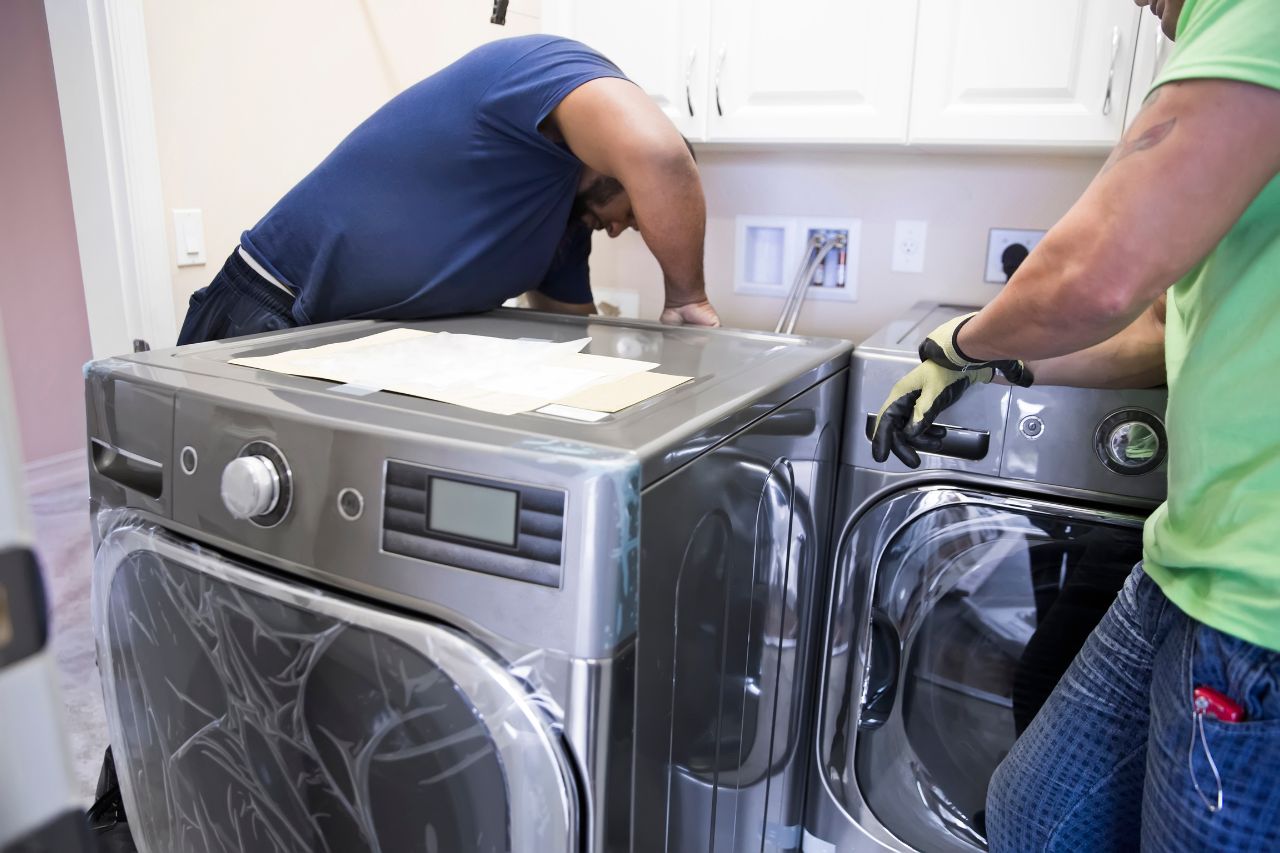How to Move a Washer and Dryer: Expert Bluffton, SC Guide from Montford Movers

Moving a washer and dryer might seem simple, but these heavy appliances require careful disconnection, secure transport, and precise reinstallation to avoid costly damage or injury. Whether you're relocating within Bluffton, moving across the Lowcountry, or setting up a new laundry room, following the right steps protects your appliances and ensures they work flawlessly once you arrive. For homeowners seeking a smooth, stress-free experience, partnering with trusted local experts like Montford Movers can make the entire process safer and more efficient.
Why Moving Washers and Dryers Requires Special Care
Washers and dryers are among the heaviest household appliances, weighing between 150–250 pounds. Washers contain delicate drum systems that can be damaged without proper stabilization, while dryers require careful handling of electrical cords, vents, or gas lines. Mistakes can lead to broken hoses, water leaks, electrical issues, scratched floors, or personal injury.
Step 1: Gather Essential Supplies and Tools
Before you begin, collect everything needed for a smooth move:
- Appliance dolly rated for heavy loads
- Moving blankets or furniture pads
- Adjustable wrench and pliers
- Screwdriver set
- Heavy-duty moving straps
- Packing tape and zip ties
- Bucket or towels
- Work gloves
Having the proper tools prevents delays and reduces the risk of damage.
Step 2: Prepare the Washer for Moving
A properly prepared washer reduces the likelihood of leaks or internal damage:
- Clean the Washer: Run an empty cleaning cycle with washer cleaner or a bleach solution. Leave the door open for 24 hours to fully dry.
- Disconnect Water Supply: Turn off hot and cold valves. Use a wrench to disconnect hoses and drain remaining water into a bucket.
- Unplug the Power Cord: Secure the cord to the back using tape or zip ties.
- Secure the Drum: Install shipping bolts or transit bolts to lock the drum in place. If unavailable, use tightly packed foam or towels.
- Drain Residual Water: Tilt the washer slightly to remove trapped water and soak up any moisture.
Step 3: Prepare the Dryer for Moving
Dryers are lighter than washers but still require proper preparation:
- Unplug the Dryer: For electric dryers, unplug the cord. Gas dryers require a licensed technician to disconnect the gas line.
- Disconnect the Vent Hose: Loosen the clamp and remove the hose. Clean lint buildup to reduce fire risk.
- Secure Loose Parts: Tape the lint trap door and secure removable pieces.
- Clean Exterior and Drum: Wipe surfaces to remove dust and lint.
Step 4: Protect Floors and Walls
Before moving appliances, prepare the pathway:
- Clear the route from laundry room to exit
- Lay cardboard, plywood, or protective sheets
- Remove obstacles like door frames or baseboards
Bluffton homes often feature hardwood or tile floors, making surface protection especially important.
Step 5: Move the Washer and Dryer Safely
- Use an Appliance Dolly: With at least two people, tilt the appliance and slide the dolly underneath. Secure tightly with straps.
- Roll Carefully: Take wide turns and avoid sudden moves. Communicate clearly when navigating stairs or tight corners.
- Keep Upright: Never lay washers or dryers on their sides.
- Loading Into the Truck: Use a ramp or lift gate and secure appliances upright against the wall with straps.
Step 6: Transport and Unload
Drive carefully, avoiding sharp turns and sudden stops. At your new Bluffton home:
- Use the dolly and ramps to unload
- Move appliances into the laundry room
- Remove blankets, straps, and tape
Step 7: Reinstall the Washer and Dryer
For the washer:
- Remove shipping bolts
- Reconnect hot and cold hoses
- Turn on valves and check for leaks
- Plug in the power cord
- Level the washer using adjustable feet
For the dryer:
- Reattach the vent hose and secure clamps
- Have a licensed technician reconnect gas lines
- Plug in the cord and test a short drying cycle
Test both appliances to check for leaks, noises, or unusual vibrations.
Common Mistakes to Avoid
- Forgetting to stabilize the washer drum
- Laying appliances flat
- Neglecting to drain hoses
- Moving without enough helpers
- Failing to level appliances after installation
When to Hire Professional Movers
While DIY moves are possible, hiring pros offers clear advantages:
- Professional-grade equipment
- Trained appliance movers
- Full insurance coverage
- Safe disconnection and reconnection
- Protection for floors, walls, and your appliances
For large home relocations involving heavy appliances, consider residential moving services from specialists experienced in handling washers and dryers.
Local Bluffton Insights
Bluffton’s humid climate means washers and dryers should be thoroughly dried before transport to prevent mold. During the hot summer months, schedule moves during cooler morning hours. Some neighborhoods and HOAs may have rules on delivery windows or appliance installations.
Why Choose Montford Movers
Montford Movers provides safe, efficient appliance relocation across Bluffton and the Lowcountry. From disconnection to transport and reinstallation, their team handles every detail with professional care and transparent pricing.
For homeowners preparing to move, you may also find helpful lifestyle resources such as this guide to thoughtful moving-away gifts for friends and family during relocation.
Contact Montford Movers at (843) 278-8432 or sales@montfordmovers.com for dependable washer and dryer moving services in Bluffton, SC.
Frequently Asked Questions
Do I need to secure the drum inside my washer before moving?
Yes. Using shipping or transit bolts is essential to protect the drum suspension system.
Can I move a washer or dryer on its side?
No. Always transport appliances upright to avoid internal damage.
Should a professional disconnect a gas dryer?
Yes. Gas lines should only be handled by licensed professionals due to safety risks.
%20(1).avif)
.avif)

.png)
%20(1).avif)








